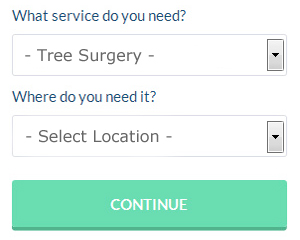Billingham Tree Surgeons (TS22): It is no great surprise that there are sizeable trees growing on a large number of properties in Billingham. Although trees are crucial for a healthy environment, and are also nice to look at, they do need a certain amount of care and attention. Trees can sometimes get diseased, overgrown, or simply need routine maintenance such as pruning and trimming. When the weather in Billingham is windy, trees can even be a hazard to buildings, vehicles or even people, as as branches or entire sections of tree can snap off and tumble to the earth. If your Billingham property has got trees growing on it, the obligation for looking after them is yours.
Quite a few do-it-yourself tree care processes are of course possible if you prefer a hands-on approach, and the maintenance of shrubs, hedges, smaller trees and fruit trees, can all be completed by a devoted gardener. If they can be readily accessed from ground level, overgrown branches can be pruned and trimmed without too much aggravation, and these are certainly jobs that you can have a crack at if you know what you are doing, have the right tools and are self-confident. However, if your trees are larger and can only be accessed by ladders or climbing, it's advised that you call in specialist help.

There are a number of risks concerning working at height up a tree, and aside from you falling and hurting yourself, you could also drop tools or heavy branches that cause harm to those standing or walking underneath. This kind of work also involves the use of hazardous tools, and the thought of an inexperienced gardener wielding a powered-up chainsaw whilst balancing precariously up a tree sends shivers along my spine.
Although you might assume that a gardener is the right person to contact for this sort of work, most gardeners aren't actually competent in the correct techniques of tree care. The tradesperson that you really need is a tree surgeon, who will have all the right tools and equipment for any type of tree care work. As determined by the scale of the work involved, and the type and size of trees that you have on your property in Billingham, certain special equipment such as wood chipping machinery, chainsaws and harnesses, might be required.
Whilst you may find numerous folks in Billingham who profess to be tree surgeons, only a genuine tree surgeon will be skilled in using such equipment and tools, will be a qualified arborist and will be able to show you certifications such as:
- CS38 (NPTC 206/306) - Climb a tree and carry out aerial rescue.
- CS31 (NPTC 203) - Fell & process small trees up to 15 inches (380mm) diameter.
- CS30 (NPTC 201/202) - Chainsaw maintenance and crosscutting.
- CS39 (NPTC 308) - Operate a chainsaw from rope and harness.
Tree surgeons should also have basic first-aid qualifications. It's vital that all professional tree surgery in Billingham is undertaken to British Standards BS3998 (2010) guidelines.
Those are the basic qualifications that you should be asking to see when you are hunting for a bona fide tree surgeon in Billingham. If the so-called 'tree surgeon' you are thinking of using can't verify that they've got at least a few of these accreditations, avoid them and find somebody that does. More seasoned tree surgeons in Billingham could also hold a City & Guilds or other qualification in arboriculture, forest management, forestry, countryside management and woodland conservation & ecology.
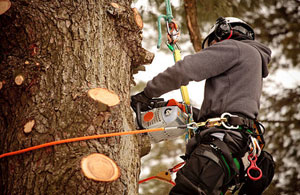
A wide variety of different tree related work such as tree felling, tree planting, tree surgery, stump grinding, disease identification, tree removal, pest control, transplanting and the protection of trees from grazing, can be carried out by a properly trained tree surgeon in Billingham.
Some of the more typical tree related activities like staking, tree felling, crown raising, crown thinning, damage restoration, crown shaping, pruning or crown cleaning, are the ones that will be needed by home owners in Billingham.
A trustworthy Billingham tree surgeon should also be acquainted with, and competent in the use of an array of tree surgery tools and equipment such as climbing ropes, chain saws, lowering slings, stump grinders, slacklines, rigging pulleys, wood shredders, winches, axes, pole saws, rigging ropes and harnesses. If the individual you've picked out shows up with just a ladder and a handsaw, get shot of them and find somebody better.
Before you do any significant work on your trees in Billingham, you need to make certain there is not a TPO (Tree Preservation Order) on any of them. To check whether any trees on your property are protected by Tree Preservation Orders, get in touch with your local planning authority. Talk to your tree surgeon about this - they'll be able to check this out for you.
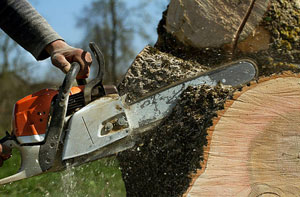
Once you have established that your trees require the expertise of a professional Billingham tree surgeon, you can start your search for a good one. There are several approaches to accomplishing this. You can look through your local newspaper or check out the Yellow Pages. You can search the internet and find the websites of local tree surgeons working in the Billingham area. If neighbours or friends have used a tree surgeon, you can get a recommendation from them. You could try out one of the many online trade portals such as Bark, Rated People or Trustatrader. These methods should give you a reasonable short list of potential tree surgeons.
If you aim to employ the crème de la crème of tree surgeons you should try to find an Arboricultural Association (ARB) approved contractor, who you can trust to be certified and fully trained in the following:
- Training and development.
- Working standards, operations and knowledge.
- Effective business management and customer service.
- Compliance with arboricultural health and safety requirements.
- Compliance with environmental practices.
With regards to tree surgery in Billingham you must avoid rogue traders, cowboys and jack-of-all-trades type people. As has been previously mentioned, this is a dangerous task and should never be performed by anyone who is not fully trained.
You should also remember that if the work is not completed by somebody who is competent, irreparable harm or damage may be done to your precious trees. Trees that are pruned, lopped or treated in an improper way or at the wrong time of year, can have their health affected in disastrous ways, therefore my advice is - only employ professionals.
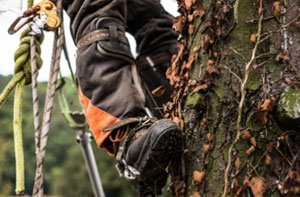
You shouldn't just call one company in and accept the first quote you're given, try to get at least 2 or 3 quotes from different local tree surgery firms in Billingham, so you're better able to judge. With regards to choosing your Billingham tree surgeon, you shouldn't automatically choose the one that provides the lowest price.
You should invariably try to ask lots of questions, and from the answers that they provide, your should get an idea of how able they are and just how much they know. Make certain that they have the required insurance, and confirm what's included within the quote. One vital element that you'll want to know is if the removal of waste, logs and branches is included in the quoted price. Depending on the scale of the task, quite a lot of waste could be generated.
Getting a few references from past customers, is yet another step you can take. They will be delighted to provide you with references and perhaps even photos of work that they've accomplished if they are a trustworthy company. It may also be worth checking their Facebook page (if they have one), as its likely to contain a number of hints about the reliability of the company and the clientele it claims to serve.
Locally based Billingham tree surgery services are most likely have the postcode TS22 and the dialling code 01642. They'll operate in Billingham itself, in addition to nearby areas such as East Hartburn, Wolviston, Greatham, Seal Sands, Elwick, Newton Bewley, Middlesbrough, Stockton-on-Tees, Haverton Hill, Grindon, Norton, Wynyard, Stillington, Thorpe Thewles, Claxton, and these postcodes: TS22 5HB, TS22 5AN, TS22 5EP, TS2 1SU, TS22 5JZ, TS22 5AX, TS2 1SF, TS22 5ER, TS2 1UA, TS22 5BW. Verifying this can ensure you are accessing a local tree surgeon. Billingham homeowners can benefit from these and numerous other tree related services.
If you require this type of service it is definitely wise to bring in an approved tree surgeon. Billingham householders can substantially benefit from the skills and knowledge that a seasoned professional can offer.
Obtaining Advice and Information
When speaking to local Billingham tree surgeons, you need to ask questions like: Do you and your workforce have the correct certifications and qualifications (for tree management and chainsaw use)? Do you have membership of a reputable professional association (such as The Arboricultural Association or the International Society of Arboriculture)? Are you able to supply references from former customers? Does your work adhere to the British Standard? Can you give me a quote in writing? Do you have public liability and employers insurance? to make certain that they know what they're up to and that they'll not inflict irreparable damage on your precious trees. If you don't get good enough responses to any or all of these questions, you should look elsewhere for a tree surgeon.

To find lots of helpful advice regarding how to pick a quality tree surgeon, as well as a searchable directory of authorized tree surgeons in the UK, you should visit the Arboricultural Association website. Another website providing a "verify tree surgeon's credentials" tool and a "find a tree surgeon (arborist)" tool, is the International Society of Arboriculture (I.S.A), where there is obviously a lot more information on tree management and surgery. To get a basic view of tree surgery as a profession, you can visit the trusty Wikipedia "Arborist" article by clicking here, or the Britannica article here. Using one of the much publicised trade portals like Trustatrader or Rated People, where customer reviews and testimonials are available to look at and required credentials have previously been verified, will also save you a good deal of time, because they do the majority of the hard work on your behalf. A Government endorsed organisation where you can also track down trusted trades-people including tree surgeons, comes in the shape of Trustmark.
Pollarding Billingham
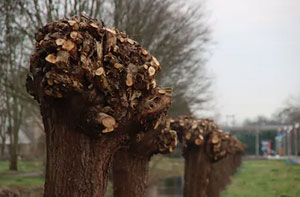
Pollarding is mostly conducted for basic safety reasons and is a technique for considerably reducing the size of trees that have got too large for their existing environment. It can sometimes be used for functional or aesthetic motives to mould a tree into a specific form. Trees that grow beside streets in Billingham are quite often pollarded, as are those which are used for boundaries and in managed hedgerows. Since pollarded trees have got such a bare and harsh appearance, and will likely never return to their earlier shape, this technique isn't very popular with those who adore trees. However, in spite of the relatively unsightly appearance of pollarded trees such as oaks, sycamores, maples, horse chestnuts, beeches, planes and limes, there's a beneficial aspect to this technique, in that such trees can be conserved when they'd otherwise have to be removed.
Dutch Elm Disease
Devastating tree stocks and killing millions of precious elm trees throughout the British Isles over the last 50 years or more, Dutch Elm Disease (Ophiostoma novo-ulmi) isn't so prevalent now, as it was previously. Spread by the elm bark beetle and caused by the fungus Ophiostoma novo-ulmi, Dutch Elm Disease (DED) was accidentally brought into the British Isles from North America (Canada) in the Sixties.
Its rapid spread was largely down to to elm products such as saplings, bark mulch, crates, and firewood logs with the bark still attached, being moved throughout Great Britain. It was not just the British Isles that was affected by this horrific disease, as elm stocks were also ravaged in continental Europe, North America and New Zealand.
Typically first showing up in early summer, the recognisable symptoms of Dutch Elm Disease disease are:
- Affected shoots dying back from the tips.
- Twigs with dark streaks underneath the bark.
- A "shepherd's crook" reaction on affected twigs.
- Clusters of leaves that turn yellow, wilt and fall.
The spread of this disease has been slowed by the chopping down of dead, infected and dying trees, which has essentially removed the elm bark beetle's habitat. The propagation of young saplings which are resistant to DED is an ongoing project.
You can get in touch with your local tree surgeon for advice, if you suspect that you might have affected elm trees in your garden in Billingham, or you could put in a request for a diagnosis from the Tree Health Diagnostic and Advisory Service (THDAS), for which there is a charge.
(Tags: Dutch Elm Disease Signs, Spotting Dutch Elm Disease, Dutch Elm Disease Billingham).Storm Damaged Trees Billingham
Although we're all acquainted with the extreme power of Mother Nature, big trees seem sturdy, strong and capable of standing up to just about any eventuality. In actual fact some species of tree can live for hundreds of years.
Nonetheless, when faced with certain conditions they can be very vulnerable to the elements, and it is not simply falling tree limbs and branches that can be the result, but the whole tree can fall down in extreme circumstances. High winds are the main enemy of trees, and this sort of damage has become more and more common in Billingham, as the number of violent storms and weather events escalates with climate change. Flooding or prolonged periods of rainfall can cause the soil around roots to become saturated, which can cause further issues for trees, as can heavy snowfall during wintertime.
To prune and remove any dead or excessively long branches that may cause an issue in severe weather conditions, it is advisable to get a qualified Billingham tree surgeon to examine your trees regularly.
It is also recommended to fit larger trees with lightning rods, copper conductors, or other protection systems, to prevent them getting struck by lightning, and to protect surrounding buildings and property which may be vulnerable to "arcs" or side-flashes. A tree can be killed or drastically weakened by a lightning strike, and even when the effect is not instantly noticeable, the tree will likely be more vulnerable to attack by disease and pests. You may not feel that lightning strikes are all that common, however in the UK alone there are about 300,000 strikes every year.
Your local Billingham tree surgery company will be able to offer guidance and advice on what can be done to safeguard your trees from storm damage, and lessen the risk of mishaps occurring because of this.
Chainsaws in Tree Surgery

The most common tool that professional tree surgeons in Billingham use is the chainsaw. It is an effective and versatile tool, but can be pretty dangerous in untrained hands. Due to their ease of use and portability, petrol driven chainsaws are the most preferred by tree care professionals, although battery and mains electric models are available. Petrol driven chainsaws are really the only option for the heaviest tree work, being very powerful and able to effortlessly slice through trunks and tree limbs of any size.
A chainsaw essentially consists of a rotating engine-driven chain which is armed with a series of razor-sharp teeth that readily cut through the bark of the tree and the wood beneath. In addition to what drives them, there are also a variety of designs of chainsaw for different procedures, rear-handled for working on the ground (must be used with two hands), top-handled for working at height (and which can be operated single handedly) and pole saws for hard to reach branches and long distance pruning.
Even though it's not the safest thing to be climbing up a tree with, it is fairly rare to find a tree surgeon in Billingham that doesn't use a chainsaw virtually every day. One of the primary prerequisites for membership of the Arboricultural Association, is that professional tree surgeons have to be trained in the safe use and maintenance of chainsaws.
There are quite a few different brands of chainsaw, but the most commonly used by tree surgery specialists in the United Kingdom are Makita, Stihl, Hyundai and Husqvarna.
Stump Grinding
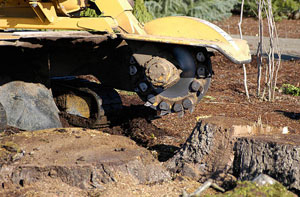
If you need to get stump grinding done on your property, be certain to work with a firm with the appropriate equipment and knowhow. Expert tree surgeons should always clear all of the stump to twelve inches or more below the surface. Having the use of the proper machinery means that the tree surgeon will have the ability to extract stumps and roots fairly close to walls and structures without causing any damage. Even tree stumps which are tucked away in narrow alleys and passageways, can be removed using the right machinery. Where huge trees must be removed the stump that remains can be pretty substantial and the major roots will go down to a significant depth, demanding a herculean effort to remove them.
Air-Spading Billingham
There are a number of issues that could make the health of your trees a concern, but problems with a tree's root system are quite often the cause. A certified Billingham tree surgeon might need to access your tree's root system, to be able to check for problems such as root rot and soil compaction.
This was somewhat problematic to achieve during the past, because during the digging down process, the roots could easily be damaged. Many modern day tree surgeons in Billingham use a system called "air spading", which uses compressed air to effectively break up and remove compacted soil without any risk of damaging the tree's roots, or any utilities that happen to be nearby.
The soil surrounding tree roots can sometimes get compacted by passing vehicles, construction work or foot traffic, and this can have a negative effect on the general health of a tree. When a tree becomes "stressed" it is more prone to attack by pests, insects and diseases, and this stress can be caused by a lack of nutrients and water. Root flare problems can also be corrected with air-spading, and this is when the flare around the base of the stem gets covered with soil, increasing the chances of root decay by causing tissue breakdown.
Involving the use of an air compressor and an air-spade tool, this process forces air into the soil at high speed (1200mph), this breaks it up by entering voids in the soil, but has no effect on the tree roots or nearby utilities. This fast flow of air blows the soil away from the tree's roots, enabling immediate inspection. Problems can then be resolved and the previously compressed soil exchanged for a looser layer of wood chip mulch and fertiliser to revive the tree.
Wood Chipping Billingham

To reduce the branches, vegetation and tree limbs that tree surgery generates, the majority of professional Billingham tree surgeons will make regular use of wood chipping machines. Subject to which equipment is being used, these awesome wood chipping machines can gobble up as much as forty tonnes of material every hour, although approximately five tonnes every hour can be processed by the more frequently used devices.
Chipped down tree branches are of course much easier to transport, taking up a lot less space in the tree surgeon's vehicle, and can additionally be used for biomass solid fuel, garden walkways, mulch, ecosystem restoration, mushroom cultivation, landscaping, wood pulp and weed prevention, to name but a few.
Should you decide that you wish to keep some of the wood chippings that result from your tree surgery project, most Billingham tree surgeons will gladly let you keep them. If you have no use for them, they'll take them away for use on other assignments, or appropriately dispose of them. Even when you do not need any tree surgery to be done on your property in Billingham, tree surgeons are a good source for wood chips which you can use for various purposes throughout your garden. Some tree surgeons will be willing to let you have wood chips free, others may charge a fee, especially if you need to have them delivered.
Wood chipping machinery is manufactured by several companies, some of the most recognised makes include Crytec, Hyundai, Forest Master and Timberwolf.
Tree Stump Removal Billingham
When you've got a tree that needs cutting down and removing in your garden in Billingham, there is also a stump to think about. You might consider allowing it to decay and rot away entirely naturally, and be happy to leave it to its own devices. However, stumps can be a trip hazard, an eysore and can attract unwelcome pests.
There are a number of ways that you can remove a stump, if you decide that this is the preferred plan of action, but the 2 key choices are stump grinding and stump removal. Below we'll be investigating the stump removal solution.
There are in essence 3 techniques for removing a tree stump - chemical treatment, digging out by hand or burning. If you're hoping to deal with a stump yourself, the use of any of these techniques may be possible. If a tree surgeon is going to be performing the work, stump grinding is typically their technique of choice, however eco-plugging or some other chemical removal treatment might be offered.
Stump Burning: As it may contravene legislation in your area and can definitely be quite dangerous, burning stumps isn't a recommended course of action. Should you choose this technique, extreme caution is essential. You'll have to drill some 1" holes into the tree stump, and pour in some vegetable oil, you'll have to keep the holes topped up over a period of several days until the stump has become totally saturated. The tree stump is then heaped up with charcoal and set alight. A fire like this should never be left unattended, and must be monitored until safe to do so. Make certain that the fire is extinguished once it is completely burned out. You can then dig out the remnants of stump and roots when it has completely cooled down.
This is not the only way to burn a stump, and you could also try digging out all the soil from under the stump and lighting a fire in the void that has been made beneath. If the tree stump is in close proximity to buildings, other trees or fences, you should never use any of these burning techniques.
Chemical Stump Removal: Chemical treatment requires the use of a powerful chemical solution like Resolva Xtra Tough Tree Stump Killer, Vitax SBK Stump Killer or Roundup Tree Stump Remover. Always read and closely follow the manufacturer's directions for applications, timings and rates for these chemical substances, and be aware that they are toxic and often flammable. Depending on the size of your stump, and whether it's dead or alive at the time of treatment, it can take a few weeks or maybe even months for a tree stump to rot totally, so consider this to be as a long term rather than a short term resolution. As soon as it's rotted, an axe can be used to chop it up and a spade for removal.
Digging Out a Stump by Hand: The digging out of a tree stump by hand is a pretty straightforward process, and involves digging out all the soil around the base of the stump, uncovering and sawing all the major roots, and ultimately freeing the stump so it can be hoisted out. The use of a cable ratchet winch may be required for the final lifting and removal of the stump. This is really tough work and not for the faint-hearted or unfit.
Cable Bracing Trees Billingham
When a tree poses a threat to nearby passers-by or property, or if it's showing signs of damage or decay, the tree may be provided with extra support with a technique known as tree cable bracing. Where highly valued or older trees in Billingham are concerned, cable bracing is used where it's unsatisfactory to chop down a tree or remove large portions that are unsafe.
A cable bracing set-up can be used for supporting V-shaped forks, weak tree limbs and poor joints. By the fitting of cables and rods most Billingham tree surgeons will be equipped to redistribute structural stresses and prolong the life of veteran trees using various forms of bracing work.
A non-invasive strategy, that doesn't damage the tree (as is the case when drilling and bolting the troublesome branches), cable bracing provides flexible and shock-absorbing support. A risk assessment must be completed by an arborist of tree surgeon before any cable bracing work can be undertaken. This is essential to guarantee the safety of the tree and adjacent areas as the work proceeds.
Tree Root Problems Billingham

When they are growing too close to your home in Billingham, certain trees have particularly aggressive roots, and can cause problems. Issues that can arise include blocked drains, cracked patios and damaged foundations. Elms, sycamores, maples and willows, are notorious for having extremely intrusive root systems.
If you are planting any new trees, make sure that they're located sufficiently far from your house, pathways, patio areas and your drainage pipes, so they don't lead to serious problems in the future. If you're already experiencing problems with established trees that are growing too near to your dwelling, you can get help and advice by getting in touch with your friendly local Billingham tree care specialist.
This isn't really the sort of task you should attempt to do for yourself, and simply chopping off the offending tree roots could kill the tree or severely threaten it's health. For a tree to survive successfully it will still need to get adequate nutrients and water, and a qualified tree care specialist in Billingham will know which roots should be left, and which roots can be safely cut.
Given that sewerage lines provide a constant source of nutrients and moisture, shrub and tree roots often cause cracks in underground drains. Blockages and joint failure can arise when the joints of a drainage system are penetrated by minute roots, which can ultimately grow into huge root balls when they're established. By using electro-mechanical equipment, manual rodding or high pressure jetting, many Billingham tree surgeons will be happy to provide high quality root removal solutions. You can also obtain root removal in East Hartburn, Wolviston, Greatham, Seal Sands, Elwick, Newton Bewley, Middlesbrough, Stockton-on-Tees, Haverton Hill, Grindon, Norton, Wynyard, Stillington, Thorpe Thewles, Claxton, and and of course in Billingham.
Tree Surveys Billingham
Tree surveys might be necessary for a number of reasons, but most frequently when property extension or development is involved. If you are clearing some land to make way for an extension to an existing property or a brand new house in Billingham, for instance, you may need to perform a professional tree survey to British Standards BS5837 (2012) if there are trees on that land. Tree surveys on both public and private property in Billingham, must be handled by a certified tree surgeon or arborist.
If a tree survey is done properly, it will produce a good deal of information about the trees located within the area specified. For instance:
- The age of the trees.
- The physiological and structural health of the trees.
- A tree reference number for each of the trees.
- Guidelines for tree management.
- The height of each tree.
- The existence of any TPOs (Tree Preservation Orders).
- The diameter of each tree (taken 1.5m above ground level).
- The number of trees (those of over 75mm diameter 1.5m from ground level).
- The life expectancy of the trees.
- The spread of branches towards the East, South, West and North.
- The species of trees.
If you are doing work on an existing property or home in Billingham, and are not modifying the service lines or access points, or increasing the footprint of the property, you will most likely not need to carry out a tree survey.
Coming Soon: Tree pruning Billingham.
Tree Surgery Tasks Billingham

Billingham tree surgeons can generally help with tree management, shielding trees from grazing Billingham, tree care services Billingham, tree cutting, tree removal Billingham, tree staking, safety inspections, tree transplanting, hazard assessment, arboriculture, site clearance in Billingham, woodchipping, shrub maintenance, crown raising Billingham, tree surveys, damaged tree cutting and removal in Billingham, tree fertilising, dead wooding, crown reduction, tree bracing Billingham, tree pest control in Billingham, tree waste removal, tree dismantling, woodland management in Billingham, root flare exposure, hedge trimming, tree replanting, tree cut sealing, dead-wooding Billingham, waste removal, tree lightening protection, coppicing Billingham, hedge reduction Billingham, tree felling, tree pruning and other tree surgeon services in Billingham, County Durham. These are just a few of the tasks that are accomplished by a tree surgeon. Billingham professionals will keep you informed about their entire range of services.
Tree Surgeons Near Billingham: Also find: Claxton tree surgeons, Thorpe Thewles tree surgeons, Middlesbrough tree surgeons, Wynyard tree surgeons, Greatham tree surgeons, Stockton-on-Tees tree surgeons, Grindon tree surgeons, Norton tree surgeons, Stillington tree surgeons, Newton Bewley tree surgeons, Wolviston tree surgeons, Haverton Hill tree surgeons, Elwick tree surgeons, East Hartburn tree surgeons, Seal Sands here. Most of these towns and villages are serviced by a tree surgeon. Billingham residents can get tree surgery price quotes by going here.
Tree Surgeons County Durham
Around County Durham you can also get: Grindon tree care services, Billy Row tree management, Shotton Colliery tree care services, Urpeth tree surgeon, Little Lumley tree surgeon, Brandon tree surgeons, Gainford tree management, Barnard Castle tree surgeon, Murton tree care, Byshottles tree surgeons, Wheatley Hill tree care, Barnard Castle tree management, Longnewton tree care services, Ushaw Moor tree care services, Easington tree surgery, Stanley tree surgeons, High Etherley tree care, Sacriston tree surgery, Cornsay tree management, Hunwick tree care services, Lynesack tree surgeons, Trimdon tree surgery, Trimdon Colliery tree surgeon, Stanhope tree surgeon, Bearpark tree care, Whitton tree management, Middleton St George tree surgery, Tow Law tree surgeons, Blackhall Colliery tree care services, Byers Green tree surgery. All throughout County Durham it should be possible to find tree surgeons who will provide you with various services for your tree care needs. If you cannot identify the right tree surgeon in Billingham itself you will surely be able to uncover a good one nearby.
How to Find a Tree Surgeon
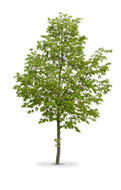
In the old days most people looked in local newspapers or in the Yellow Pages to look for nearby tradesmen, although the contemporary equivalent of that would seem to be browsing around web directories such as Cyclex, Yell, 118 118, Local Life, Thomson Local, Touch Local, Yelp, City Visitor and Mister What, naturally such web directories do not all give reviews, therefore you don't necessarily get any idea of any particular tree surgeons reliability. Trade portals are another resource that you're able to use to uncover a high-quality tree surgeon, try Rated People, TrustaTrader, My Hammer, My Builder, Local Heroes or Checkatrade, and the good aspect of such trade portals is that it is possible to look at reviews and testimonials by past customers about the tradesmen and their standard of workmanship. Last of all, you can ask acquaintances, neighbours and family to endorse someone they've used in the past.
Tree Care Services Billingham
- Billingham Crown Thinning
- Billingham Tree Surveys
- Billingham Tree Bracing
- Billingham Crown Raising
- Billingham Soil Terraventing
- Billingham Woodchipping
- Billingham Tree Topping
- Billingham Cable Bracing
- Billingham Tree Reduction
- Billingham Woodland Management
- Billingham Crown Cleaning
- Billingham Dead Wooding
- Billingham Tree Care
- Billingham Tree Maintenance
Tree Surgeons Around Billingham: Throughout the year, homeowners in the following Billingham places have sent in enquiries about tree surgery: Axbridge Court, Cheviot Crescent, Bolam Grove, Bosworth Way, Stainton Road, Claygate, Sunnybrow Avenue, Chillingham Court, Allington Drive, Thropton Close, Sandown Road, Cumberland Crescent, Cranstock Close, Bannockburn Way, Beverley Road, Dunsley Drive, Avon Grove, The Wynd, Carthorpe Drive, Sherburn Avenue, Clifton Avenue, Annfield Close, Thornton Crescent, Coleridge Road, Casson Way, Blake Close, Belasis Avenue, Tanton Grove, Skripka Drive, and also in these nearby postcodes TS22 5HB, TS22 5AN, TS22 5EP, TS2 1SU, TS22 5JZ, TS22 5AX, TS2 1SF, TS22 5ER, TS2 1UA, TS22 5BW. Work was completed in these areas by a qualified tree surgeon. Billingham business and home owners were given trusted and competent tree surgery services in all cases.
More County Durham Tree Surgeons: County Durham tree surgeons: Bishop Auckland, Durham, Newton Aycliffe, Billingham, Stanley, Hartlepool, Chester-le-Street, Peterlee, Seaham, Stockton-on-Tees, Darlington and Consett.
To read local info about Billingham, County Durham click here
Tree Surgeon Jobs Billingham: Find Billingham tree surgeon jobs here: Tree Surgeon Jobs Billingham
Tree Surgery TS22 area, (dialling code 01642).
More Trades: Gate Fitters - Gutter Cleaning - Tilers - Carpet Fitters - Carpenters
Tree Management Billingham - Vegetation Management Billingham - Tree Surgeon Billingham - Tree Surgery Billingham - Arboriculture Billingham - Tree Surgeon Near Me - Stump Removal Billingham - Tree Care Billingham - Tree Surgeons Billingham




